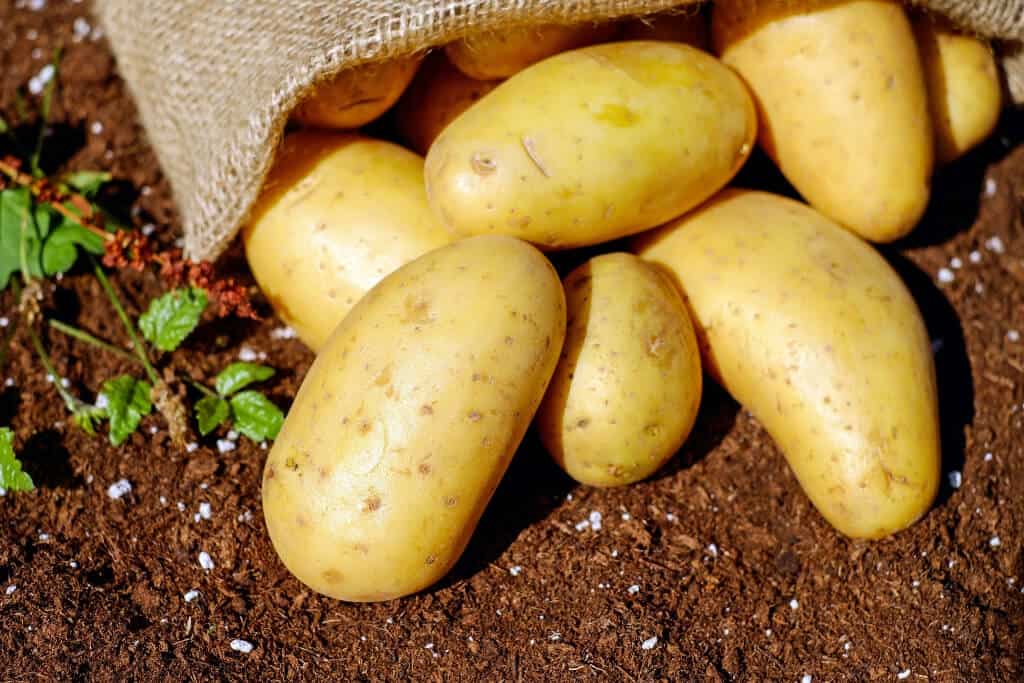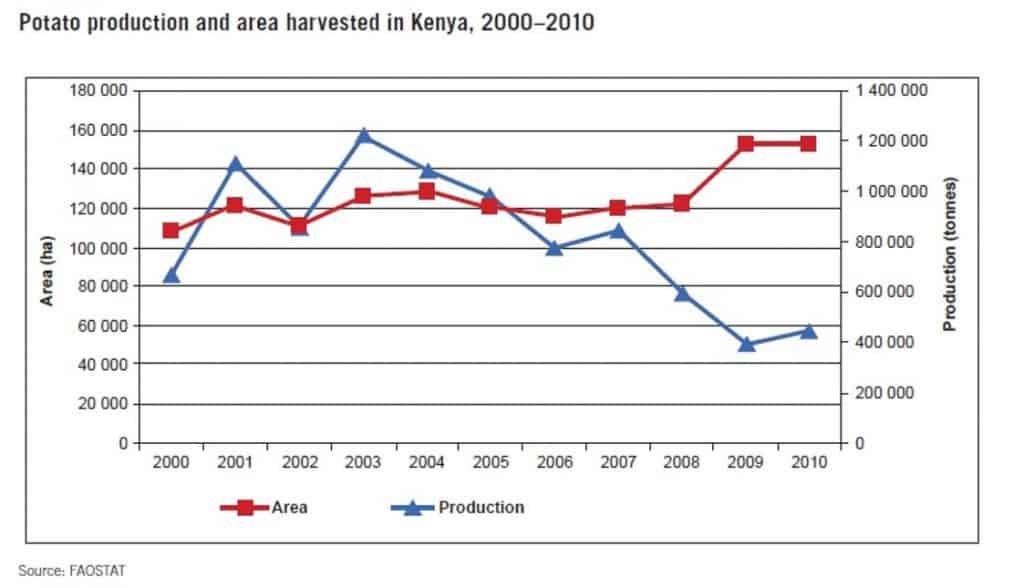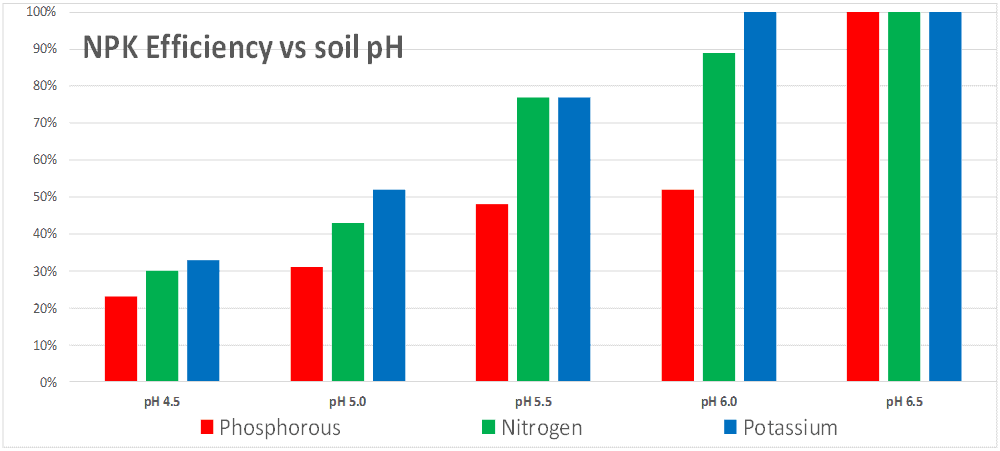
Is potato farming profitable? What are the potato fertilizer nutrient recommendations? What potato diseases and pests are likely to affect my crop? Are there potato virus diseases and what are their control methods? Ruth Vaughan, delves into all your questions..
Irish potato farming in Kenya & Africa at large is gaining ground as demand for the potatoes grow due rapid urbanization and the good price the crop fetches. Potato farming statistics indicate that production around the globe has risen steadily over the years (267 million metric tons in 1990 to 377 million metric tons in 2016). China is the largest producer of potatoes in the world. Only about 50% of potatoes are used fresh for cooking at home – the rest are used in processing.
“What I say is that if a man really likes potatoes, he must be a pretty decent sort of fellow.”—A. A. Milne, English writer (1882–1956)
The Irish potato, Solanum tuberosum, is the second most important staple crop grown in Kenya, after maize, and before rice. Irish Potatoes are extremely good for us! Irish potato tubers contain zero fat, sodium & cholesterol and packed with protein, slow release carbohydrates and vitamins and minerals, not to mention health promoting phytonutrients.
Potato farming is quite popular. Potato is a major food crop that is grown in over 100 countries around the world. Global demand (and more so, local demand!) is rising due to rapid urbanization creating a growing middle class population and the increasing appeal of fast foods e.g. crisps (chips) and French fries.
Potato farming statistics are on the upward trend in Kenya. Irish potatoes are the second most consumed staple in Kenya. Potatoes are generally grown in the higher altitude areas, in 15 counties, on rain-fed land, where they compete favorably with maize production. 800,000 people in Kenya directly benefit from on potato farming production while potatoes provide a source of income for over 2.5 million people employed in the value chain. 90% of potatoes are grown on smallholdings on less than 0.5 acres of land. Potatoes are therefore an important food crop, for food security as well as an important cash crop that contributes to the GDP.
Potato farming statistics indicate that Kenya’s demand for Irish potatoes is increasing annually. While there is a general increase in the land area that potatoes are cultivated on, Total National Production has remained steady or declined over recent years, with much lower yields per ha being achieved now than in 2004 and 2007. Average published potato farming statistics yields are sitting at <14 MT/ha. (FAOSTAT). Yield expectation should be more than 20-40 MT/ha.
Thus, as a country, we could potentially more than double our yields, without increasing land area. This would go a long way to improve GDP and Food Security, uphold Uhuru’s Four Pillars and Kenya’s 2030 vision and contribute to the Global ‘Feeding the 50 billion’. What is causing the yield reduction trend and limiting our yields? What can we, as farmer’s, do to turn the tables on our potato farming production?

Continuous potato farming on the same soil using the same fertilizer program and soil preparation method for generations with no consideration to the chemical balance in the soil has resulted in a large proportion of potato growing soils developing low soil pH and calcium levels, low phosphorous levels and a break down in soil structure and biodiversity in the soils. Bad soil structure reduces root penetration and water infiltration into the soil and promotes flash flooding and soil erosion in the rains, and crop droughting in dry weather.
“To increase yields, farmers just need to change the type of fertilizer they are using , not spend anymore on fertilizer. Soil testing always pays. Get the right nutrient balance. Guess work makes farmers broke. “
Jeremy Cordingley, Soil Health Expert
Low soil pH reduces nutrient uptake efficiency. So more fertilizer needs to be added for the same result. And this perpetuates the downward spiral of low pH. A low fertilizer efficiency can mean either the farmer uses the same amount of fertilizer but gets a lower yield, OR the farmer adds more fertilizer to maintain the same yield. The result is the same to the farmer in terms of income reduction due to either increased input costs or reduced production.
The effect of soil pH on the uptake of major nutrients is greatly affected by soil pH as shown in this chart. At a pH of 4.5 – the uptake of Phosphorous is reduced to less than a quarter – which means that for the same result the farmer needs to apply 4X as much. We often pick up soil pH’s of less than 3.6!

Calcium and soil pH tend to go hand in hand with low pH indicating low calcium and often low magnesium. Potato farming demands a relatively high magnesium and calcium supply – and these elements are removed in the tubers at harvest. Very often they are not replenished, and levels reduce. These cations are most important for soil pH, soil structure and microbial diversity. Magnesium, used for photosynthesis, is a plant energy and yield driver, calcium is important for disease resistance, tuber quality and shelf-life. Low calcium = more diseases / more pesticide use / lower yield and quality and a short storage capacity.
A complete soil analysis at CropNuts will give the potato farmer scientifically based potato fertilizer recommendations (including lime, dolomitic lime, organic matter and phosphate recommendations) to increase the soil fertility using soil amendments to bring the pH and nutrients levels into line for better soil structure, higher yields, better quality and disease resistance, longer storing tubers and better soil health for long term sustainable agriculture. This can often be cost neutral in that the money spent on soil amendments is offset by chemical and fertilizer costs and higher yields resulting in a higher net profit to the farmer, not to mention better environmental husbandry and a higher nutrient content in the tubers.
Another cause of potato yield decline is increasing pest and disease pressure. Potatoes are a high value cash crop for rainfed land, and very often the farmers are growing a crop each rainy season (2 crops a year) with no rotation. Lack of an understanding of the diseases leads to a build up of the diseases in the crop. Here we will look at the main pests and diseases that affect potato yields in Kenya and Africa at large.
Early blight is caused by a fungal pathogen, Alternaria solani. It is common in most potato growing areas around the world. The primary infection is caused by inoculum from host plants (weeds / tomatoes / volunteer plants) or infected plant debris from the previous crop. High humidity and free moisture are required for the spores to germinate and penetrate the plant. They infect the lower mature leaves of the potato plants causing brown dots that enlarge, become angular and then are easily identified because they contain light and dark concentric bands. Under high disease pressure the lesions join up and the leaves become chlorotic and die. Remaining on the plant. Severe foliar infection will cause reduced yields and low dry matter content in the tubers.

Once in a crop the potato disease can spread fast as the spores are both wind and water borne and move around in dust, air currents, and water splashes. Alternating wet and dry periods are most conducive to the spread of the disease. The fungus can get infect the tuber at harvest reduce affect quality and storage.

Late blight is a disease caused by the fungus Phytopthora infestans, which infects Solanum species, potatoes, tomatoes, eggplants and a number of weeds and local greens. When conditions are conducive and no measures are taken to control the fungus, it can completely decimate the above ground plant parts and has dramatically devastating effects on crop yields. Late blight was responsible for the Great Potato Famine in Ireland in the 1940’s, causing over a million deaths.
Late blight can affect the potato crop at any time during the growing season but grows especially fast in cool wet weather. Temperatures of 15-21C in the day, and 10-15C at night and 100% humidity can cause the disease to move fast, killing the plants in a few days. On leaves and stems, pale green to brown spots develop, often with a purplish tinge and a greasy water-soaked look, they grow rapidly until while leaves die / plants wilt in a few days. The damaged plant material has a distinctive rotting smell. In the early morning or during very damp spells the lesions will be coated with a white velvety fungal fuzz. The spores infect the tubers, causing a rot that allows other secondary rots (eg Erwinia) to come in, greatly reducing quality and storage.
The disease can be controlled with proper cultural practices to reduce the initial inoculum and preventative fungicides. Curative control is ineffective. It remains dormant in the dry season.

Bacterial wilt, caused by the bacteria Ralstonia solanacearum, is one of the most destructive potato diseases. Symptoms include wilting, stunting and yellowing of plants, which finally die. Early symptoms include wilting in the day and recovery overnight. The bacteria gets into the tubers, which may show no external symptoms, but they rot inside, and a bacterial ooze comes out of the eyes and stem end attachment, which soil sticks to. Infected plants should be removed from the field and destroyed, and ash spread on the area. Ralstonia is spread with infected seed potatoes, soil and irrigation water. These can be tested at our laboratory before you plant. Surface water is a great risk for Ralstonia in Kenya, as there are many farms along waters edge, also there are many weeds that harbor and spread the bacteria but show no symptoms.

PCN in Kenya is a new and emerging pest that as quickly invaded many potato growing regions. Globodera rostochiensis is the main PCN although Globodera pallida has recently been picked up in one growing region. Depending on the level of PCN in the soil and the health a variety of the crop, PCN can reduce yields by a massive 80%.
PCN cysts persist in the soil for up to 20 years – but the higher the population at the start of your crop cycle the higher the damage to the crop. Rotation, rotation, rotation. PCN levels build up in the soil when potatoes are planted. The highest levels of PCN, and the highest crop damage is seen on soils that are cropped twice a year with potatoes. Even one break crop can reduce levels, but ideally potatoes should be grown in a 4-year rotation with other crops. Buy certified clean potato seed (this may not be possible as the demand for clean seed is far higher than the production)!
PCN moves around in soil, water and plant tissue. Check potato seed for infection and discard infected seed in a deep hole. Scrub potato seed thoroughly on land away from your field – to remove any PCN and soil particles that are attached to the tubers. Wash tractors and other equipment (spades / boots / buckets etc.), away from your fields to remove soil and PCN cysts. As much as possible avoid cross movement of animals and people through the fields. Burn / bury infected plant tissue away from fields. Plant PCN resistant varieties, if available.
Potato leaf roll virus causes plants to be stunted and more erect, it can cause the leaves to become upright, roll up length ways, and become chlorotic. Plants with seed borne infections are most severely affected. The virus is transmitted via contaminated seed or via aphids. It can take the aphids several minutes to hours to acquire the virus – but once they have acquired the virus, they are infective for life. Control is via clean seed, aphid control and removal of infected plants.
PLRV affects yield, marketability, and storage, it causes the conversion of starch to sucrose in the tuber – resulting in bad chipping quality.

PVY is an aphid-borne virus that causes mild to severe mottling and eventually leaf drop in the leaves. It greatly reduces the yield, tuber size and marketability of the potatoes. Infected seed potatoes are the main cause of spread. Once in the field the PVY has a wide host range (Solanaceae, Amaranthaceae, Chenopodiacaeae – ie tomatoes, eggplant, cape gooseberries, many common local greens and weeds). Aphids pick up the virus within a few seconds of feeding and proceed to transfer to one or two healthy plants before until it feeds off another infected plant. Use clean seed potatoes, control aphids. We can test for PVY in our laboratory.

The potato tuber moth or worm, Phthorimaea operculella, affects production, reduces quality and increases the risk of other pathogens entering the crop. It feeds on a restricted range of plants (potatoes, tomatoes and tobacco). It attacks plants in the field and in storage. The causal insect is a small brown moth – that is active at dawn and dusk. Moths cannot fly far – main spread is via infected tubers. Monitor numbers with pheromone traps, weed, and get together with your neighbours to plant your potatoes in at the same time.

Please contact support@cropnuts.com to learn how to tests your potato seed, soil and water. http://shambaza.com/potato-seeds has a list of certified seed suppliers.https://www.baltoncp.com/amirankenya/wp-content/uploads/sites/9/2018/12/potato.pdf has a nice potato spray program
Kind regards,
Ruth

Ruth Vaughan is the Technical Director at Crop Nutrition Laboratory Services Ltd. (CROPNUTS). Ruth is also a contributing author to Kenya’s leading horticulture magazines such as the HortFresh Journal, HortiNews and Floriculture. Ruth is a great believer in soil health, organic matter, biochar and carbon sequestration as a way to alleviate climate change and increase food security. Loves visiting farmers and seeing all the different farming methods
Order our services and get to know how to improve your soil for better yeilds.